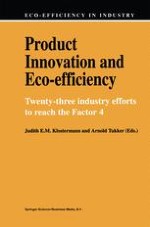Prefaced by Björn Stigson, President of the World Business Council for Sustainable Development, this book is one of the few that treats this topic by putting representatives of industry at centre stage. The book systematically addresses the drivers, the tools, and sector-specific elements that play a role in this process. The five chapters in Part I are devoted to a general introduction to eco-efficiency and the related challenges to industry in its implementation. Part II contains 23 case studies, almost all written by industrial experts who tell how they deal with the challenge: what the motivators are, what tools can be used and how they can be implemented, and what are the specific elements in sectors like building, electronics and packaging. These contributions come from multinationals like Unilever, Procter & Gamble, Akzo Nobel, Philips and Ciba-Geigy, as well as small and medium sized enterprises from such sectors as the building and furniture trades.
